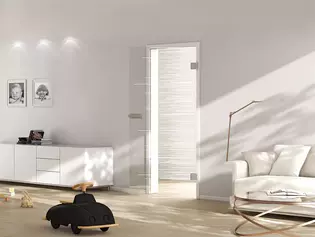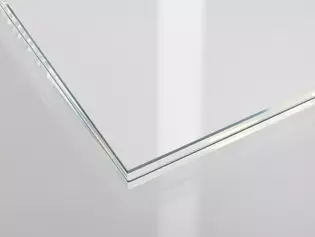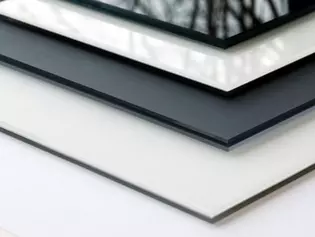Safety of glass doors
Customers are concerned about the safety of glass doors. We explain how secure they are.
Active security with glass doors
The active security of a glass door indicates how break-proof and thus how burglar-proof it is. In concrete terms, this means that the active security class or resistance class indicates how strong blows or other external impacts the glass door can withstand before it breaks.
Plain glass of the lowest security class already shatters when a ball flies against it, while bullet-proof panes can even withstand real projectiles. There are many gradations in between.
When choosing the resistance class, it depends on where the glass door will be used. A shower door or the glass door of the home office do not have to be burglar-proof or even "football-proof". Single-pane safety glass (ESG) is sufficient here. The glass of a front door, patio door or patio window, on the other hand, should be able to withstand burglars and others and should therefore be laminated safety glass (LSG). Shop window panes, especially in shops with high-value goods, must be able to withstand even more than the glass panes in a house and may well be made of bullet-proof glass - VSG of the highest class.
Burglar-proof glass does not mean that the pane will not break in the event of strong blows or stones being thrown at it, but that this will take a long time and rob the burglar of valuable time. Many burglars give up if the attempt to overcome the glass pane takes too long or causes too much noise.



Passive safety with glass doors
Passive safety describes how dangerous a pane is if it breaks.
With toughened safety glass, the safety is that if it breaks, the shards are small and blunt, so there is no risk of injury.
VSG consists of two panes of glass glued to a transparent film. If the glass breaks, the shards and splinters stick to the film and thus do not pose a danger.
Resistance classes of glass doors
The active resistance class indicates how long the window or glass door will resist a burglar - the higher the number, the longer the resistance. For private homes, the classes RC1 to RC3 are usually used. RC means "Resistance Class". RC3 glass withstands strong foreign impact for five minutes - enough time to sound the alarm. RC 4 to RC6 (10 to 20 minutes resistance) are recommended for shop windows.
The resistance class measures the resistance of the complete window or door. Based on the glass only, the classes P1A to P5A and P6B to P8B are assigned. P stands for armouring. A means the glass is bullet-proof and B, the glass is also break-proof. Again, the higher the number, the safer the glass. For residential buildings, category A glass is usually used, which is sufficient to prevent the pane from being thrown in or smashed. For example, a class P4A pane can withstand a 10 cm steel ball weighing four kilograms falling on it from a height of nine metres. A burglar first has to summon up that much strength. For shops, glass of category B is used. A pane of class P7B withstands 50-70 blows with a two-kilogram axe.
The rating is awarded by certified testing institutes. There, the glass panes are processed with hammers, axes and steel bullets and then assigned to a resistance class.
At Griffwerk, you will find glass doors for your living space made of both toughened safety glass and laminated safety glass. Feel free to ask us if you need advice on the subject of glass and security.